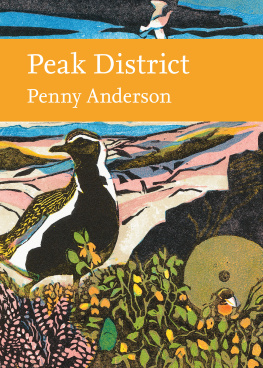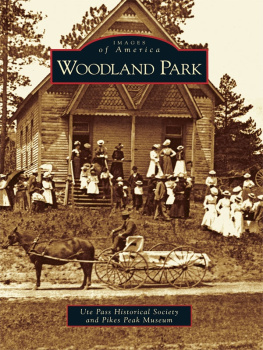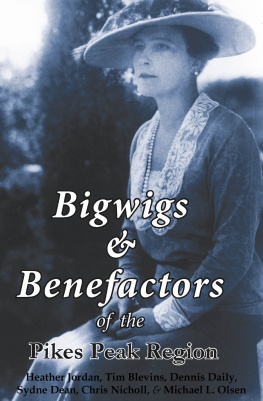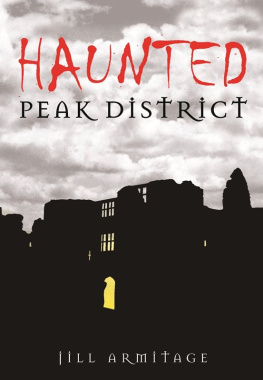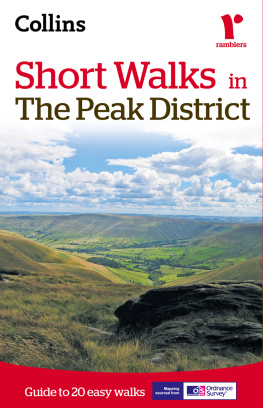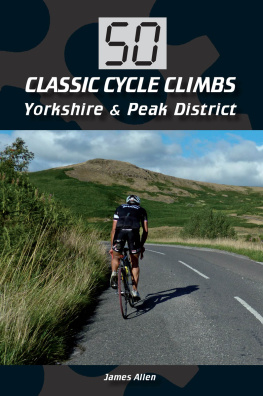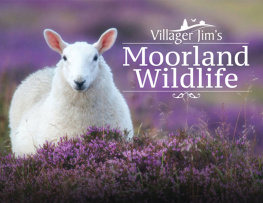Penny Anderson - Peak District (Collins New Naturalist Library)
Here you can read online Penny Anderson - Peak District (Collins New Naturalist Library) full text of the book (entire story) in english for free. Download pdf and epub, get meaning, cover and reviews about this ebook. year: 2021, publisher: HarperCollins UK, genre: Art. Description of the work, (preface) as well as reviews are available. Best literature library LitArk.com created for fans of good reading and offers a wide selection of genres:
Romance novel
Science fiction
Adventure
Detective
Science
History
Home and family
Prose
Art
Politics
Computer
Non-fiction
Religion
Business
Children
Humor
Choose a favorite category and find really read worthwhile books. Enjoy immersion in the world of imagination, feel the emotions of the characters or learn something new for yourself, make an fascinating discovery.
- Book:Peak District (Collins New Naturalist Library)
- Author:
- Publisher:HarperCollins UK
- Genre:
- Year:2021
- Rating:5 / 5
- Favourites:Add to favourites
- Your mark:
- 100
- 1
- 2
- 3
- 4
- 5
Peak District (Collins New Naturalist Library): summary, description and annotation
We offer to read an annotation, description, summary or preface (depends on what the author of the book "Peak District (Collins New Naturalist Library)" wrote himself). If you haven't found the necessary information about the book — write in the comments, we will try to find it.
Peak District (Collins New Naturalist Library) — read online for free the complete book (whole text) full work
Below is the text of the book, divided by pages. System saving the place of the last page read, allows you to conveniently read the book "Peak District (Collins New Naturalist Library)" online for free, without having to search again every time where you left off. Put a bookmark, and you can go to the page where you finished reading at any time.
Font size:
Interval:
Bookmark:
Penny Anderson is a professional ecologist and botanist, and an adopted northerner, having lived in the Peak District since 1972, and chaired the Peak Park Wildlife Advisory Group for 21 years.
Penny has written management and restoration plans for large parts of the Peak District for the National Park Authority, Water Companies and the National Trust. She co-authored Wild Flowers and Other Plants of the Peak District with Dave Shimwell in 1981. She has also developed new ways of assessing and restoring upland habitats like heathland and blanket bog. In 1998, Penny co-authored a book with the late Oliver Gilbert, Habitat Creation and Repair, and she still runs courses and gives lectures on habitat creation, restoration and management. She also regularly carries out surveys and condition assessments voluntarily for the National Trust, Natural England and the local Wildlife Trusts and contributes to local species recording.
D erek Yalden and I hoped to write this book together, but very sadly he died suddenly before we could approach the publishers. I felt an imperative then to continue in his memory and hence dedicate this book to him. Derek was Mr Peak District Naturalist, a Manchester University zoologist and avid Peak District explorer. He surveyed and published on moorland waders, mountain hares, deer, pigmy shrews, wallabies and other mammals, and some invertebrate groups. He collected carcasses to provide a database for identifying archaeological remains. He (and I) developed an interest in the effects of outdoor recreation on wildlife, especially breeding birds, and he supervised research into disturbance effects on Golden Plover on the Snake summit blanket bogs. We worked together on the Peak District National Parks Moorland Restoration Project for many years. He was a true friend and an unending source of information on the Peak District.
With Dereks loss, I have been fortunate in having equally able support from other specialists. I am a botanist and ecologist and, following a move to Manchester from the south in 1969, the Peak District became a regular weekend escape gradually becoming deeply immersed. I ran an ecological consultancy based in the Peak District all my working life, undertaking numerous surveys and prepared management and restoration plans for many Peak District sites. An early commission, by the National Park Authority (NPA), was a management plan for the Longshaw Estate, followed, in 1979, by vegetation mapping of the Longdendale catchment (about 78 sq km) for the former Nature Conservancy Council. I worked my way up all the cloughs (steep, deep valleys in the moorlands), across blanket peats and heather moors and through the flushes, recording plants and habitats. It was magical and hard work. This led to work for the NPA on the Moorland Restoration Project (197997), which identified the extent of damaged ground, worked out the causes and then started the restoration ball rolling. This provided the foundation for the Moors for the Future programme.
My consultancy provided ecological support to the NPA in the 1980s before it appointed its first in-house ecologist. We surveyed all kinds of places, finding the rare and the common. Further commissions included preparing management plans for some of the NPAs large Estates the Eastern Moors, North Lees, and the Harpur-Crewe Estate in the South West Peak. I co-wrote, with Dave Shimwell, Wild Flowers and Other Plants of the Peak District (1981), updating a seminal Peak District volume by the Cambridge University botanist, C. E. Moss (1913).
I was Chair of the Peak Park Wildlife Advisory Group (PPWAG) for some 21 years, co-ordinating and reporting issues of local concern to the NPA. Derek Yalden was a founder member. The PPWAG was superseded by the Biodiversity Action Plan development in the 1990s, but before that time, I learnt a huge amount from its members regarding the Peak Districts wider wildlife interests. I have been involved in the Peak District ever since.
My specialist interest in moorlands has led to the production and implementation, with my colleagues, of major restoration plans for our many large upland estates, commissioned largely by water companies, but also by Sheffield City Council. I have also been closely involved in the limestone areas, where the greatest floristic diversity lies. From 1977 on, I began monitoring orchids and other vegetation in Derbyshire Wildlife Trusts Millers Dale Nature Reserve. I include some of the findings here. Since I retired I have been monitoring hay meadows and moorlands as a National Trust volunteer from which I have also learnt much. As a Member of the Local Nature Partnership (Nature Peak District) I wrote the State of Nature Report for the Peak District (2016) and apply those findings in this book. It does not always make for happy reading, showing declines in common with the country as a whole but there are bright spots, such as the massive amount of moorland restoration being achieved.
I hope this long association qualifies me to deliver this Peak District volume. I want to share the wonder and magic of our fantastic wildlife and by wildlife, I mean everything that is alive and wild but, at the same time, reveal its ecological foundations, show how it has fared over the centuries and project what the future might hold. To do this, I weave in elements of vegetation history starting after the last ice age and moving through the centuries of human occupation a major factor in shaping what we see today. I end by considering the future, particularly in respect of possible climate change. I slip in stories, myths and legends where they embellish understanding and add some insight into the past uses of plants, linking them back to human cultural associations.
I try to distil scientific endeavours and recent findings (the sources are in the bibliography), embellished by my experience and observations. I use the scientific names of species the first time they are given in the habitat descriptions, but avoid cluttering the text with them thereafter, except where vernacular names are lacking, or not widely recognised. Needless to say, limited space prevents inclusion of many species and, in any case, exhaustive lists would not make for joyful reading. My selections illustrate the different habitats, but you will need to search the local atlases, or the internet, for more information on species that interest you.
My perspective is an ecological one, viewing the habitats and their species in an integrated fashion. This means avoiding separate chapters on birds or mammals and so on. This works well when the animals occupy specific habitats but less so when they are widespread. Forgive me, therefore, for some species featuring where they are first mentioned, rather than where you may have seen them!
The OS maps of the Peak District (1:25,000 is the best scale) are essential companions and provides locational data. Although these maps are unsurpassed, the best visual impression comes from overlaying local maps with aerial photography on the internet. Zoom in and out to see blanket bog gully patterns, or old lead rakes marching across the hills and dales, for example. However, maps need checking for open access land, or rights of way to locations mentioned. I have tried to suggest accessible places as far as possible, for your enjoyment, and some of these are purposefully chosen to offer easy access.
If you are interested in looking for specific locations for species, or want to see where they occur, you will need to consult the county floras, bird books and other atlases. The recent, magnificent The Flora of Derbyshire , as the main Peak District county, is excellent. The Flora of Staffordshire and South Yorkshire Plant Atlas are equally good. The Birds of Derbyshire and South Yorkshire are obtainable as books, and the Birds of Cheshire and the Wirral is freely accessible online (www.cheshireandwirralbirdatlas.org). The Mammals of Derbyshire and The Mammals of Cheshire are a must if you are interested. There is The Butterflies of the Peak District and Sorby Natural History Society publishes several regional compendiums of, for example, dragonflies, butterflies, freshwater beetles and bugs as well as others. Staffordshire Ecological Record has a searchable atlas online.
Font size:
Interval:
Bookmark:
Similar books «Peak District (Collins New Naturalist Library)»
Look at similar books to Peak District (Collins New Naturalist Library). We have selected literature similar in name and meaning in the hope of providing readers with more options to find new, interesting, not yet read works.
Discussion, reviews of the book Peak District (Collins New Naturalist Library) and just readers' own opinions. Leave your comments, write what you think about the work, its meaning or the main characters. Specify what exactly you liked and what you didn't like, and why you think so.

